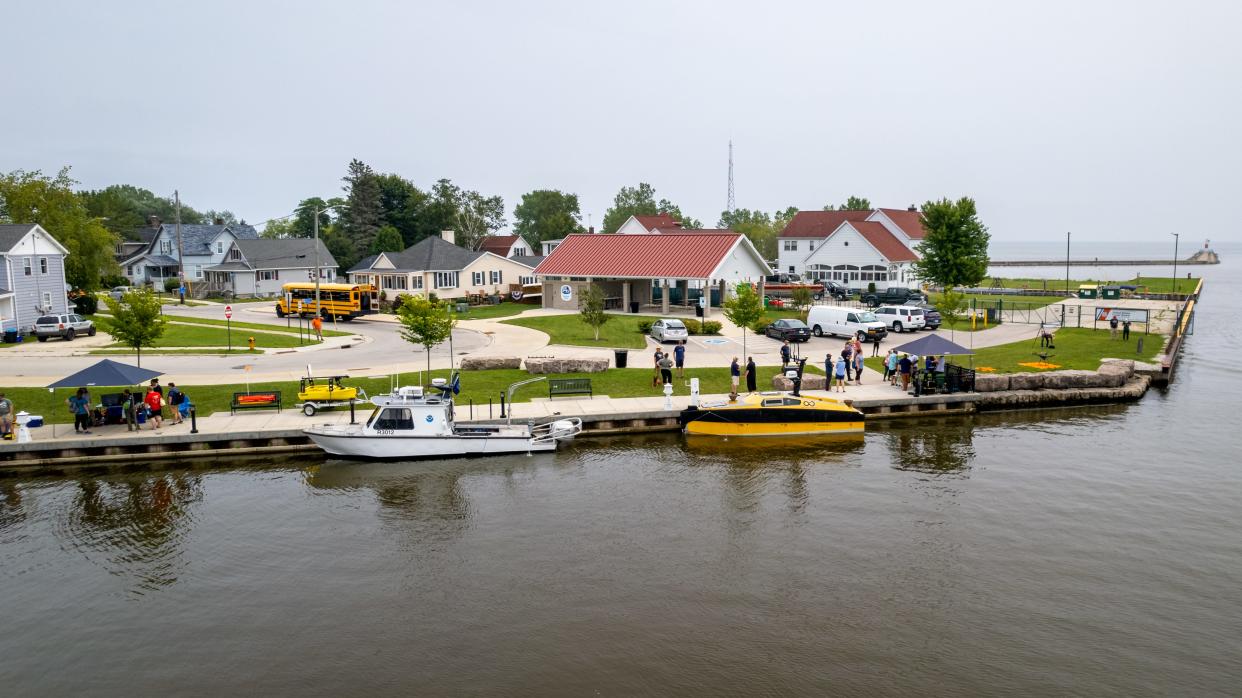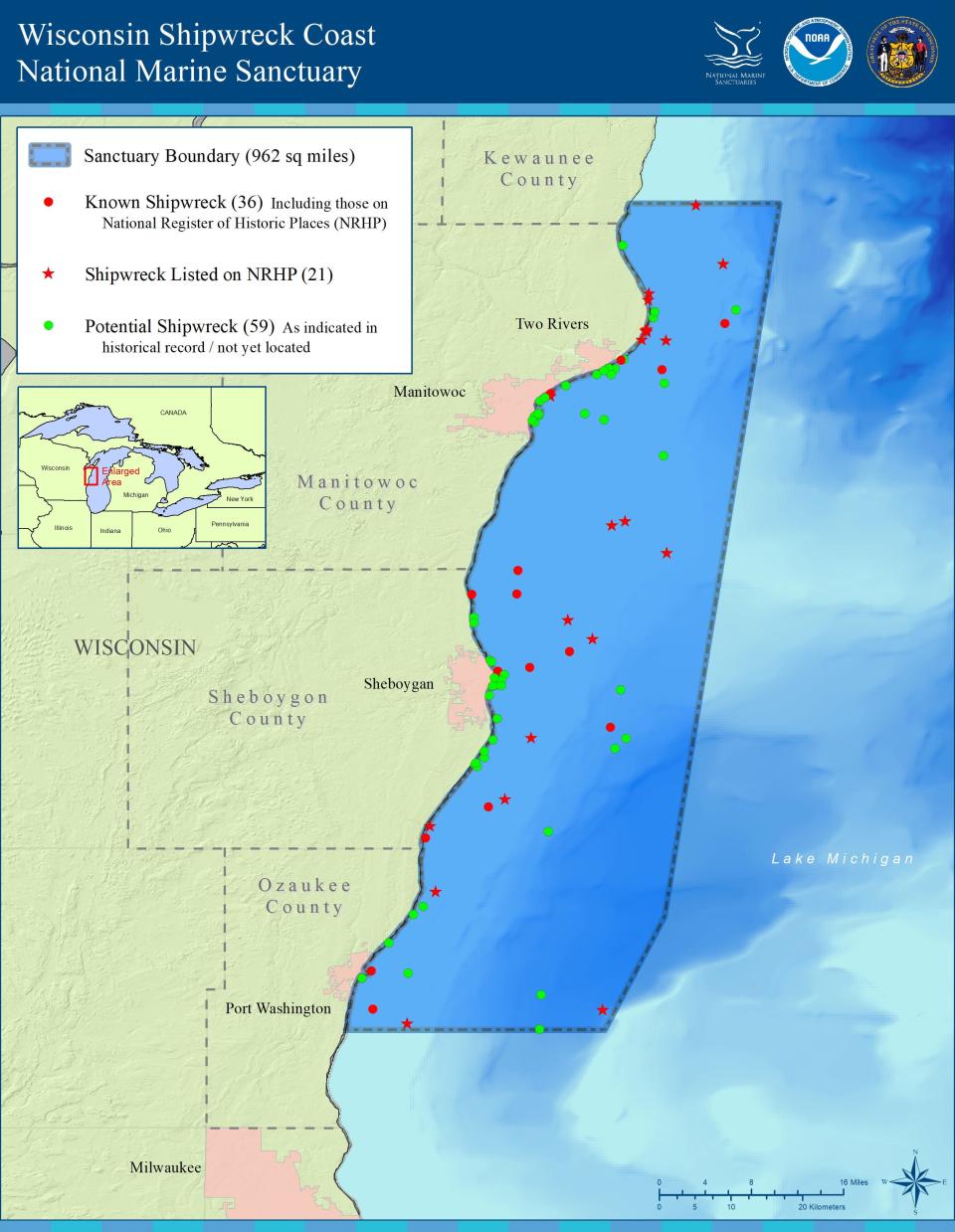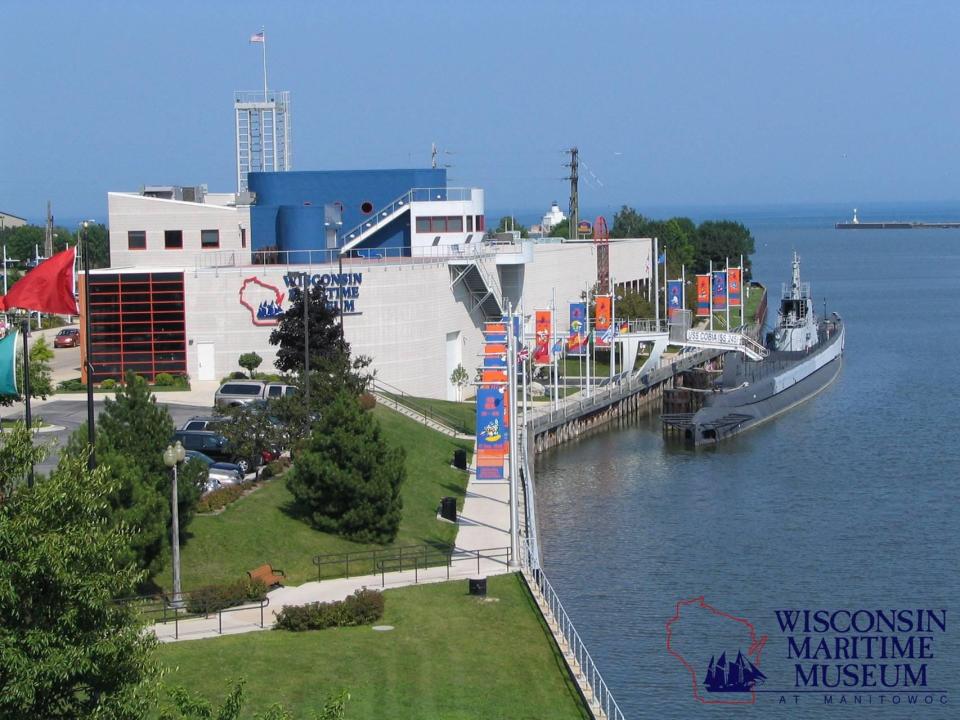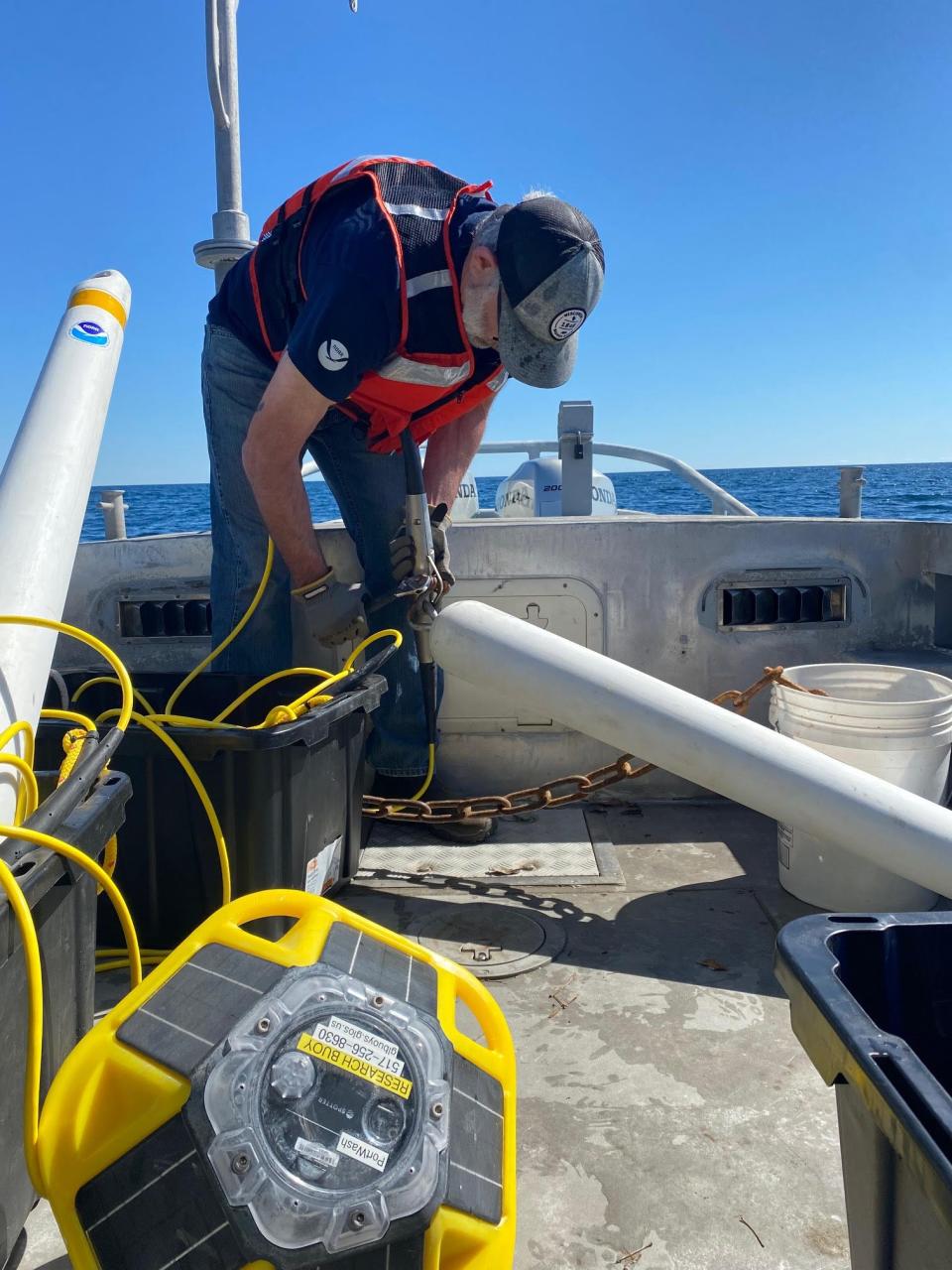Wisconsin Shipwreck Coast lays groundwork with sonar mapping, weather buoys, undiscovered shipwrecks in year one

MANITOWOC - In the year since its designation, the Wisconsin Shipwreck Coast National Marine Sanctuary has been busy laying the groundwork for future tourism and research.
That groundwork includes sonar mapping of the lakebed in the entire sanctuary, installing weather buoys and even searching for undiscovered shipwrecks.
The sanctuary is one of 15 under the purview of the National Oceanic and Atmospheric Administration and spans four Wisconsin counties — Kewaunee, Manitowoc, Sheboygan and Ozaukee.
In the sanctuary’s 962 square miles, 36 known shipwreck sites that date from the 1830s to the 1930s have been noted. Research has given evidence suggesting another 60 may yet be undiscovered.
Russ Green was named superintendent of the sanctuary after directing the Thunder Bay National Marine Sanctuary in Alpena, Michigan.
“I like the broader science applications for the work we’re doing,” he said. “One of the roles we have is to support the broader Great Lakes region and fostering awareness about this incredible resource.”
More: 'The fun part starts now': Leaders plan next steps for Wisconsin Shipwreck Coast along Lake Michigan
More: Wisconsin Shipwreck Coast on Lake Michigan designated as 15th national marine sanctuary
Sanctuary maps entire lakebed of Lake Michigan
One of the first steps Green took was to get an in-depth look at the bottom of Lake Michigan.

“So that is really essential, because without it, it’s like managing a city without knowing where the roads and sewers are in the buildings,” Green said. “This gives us a really detailed picture of the lakebed.”
The mapping was done through a $4 million contract and used advanced sonar-based technology to produce high-resolution charts of the lake’s floor.
Green said it is unusual to have the entire process done within a single year, but he’s excited to start sifting through the data.
He’s hoping to use the data to create habitat maps, improve the safety of maritime traffic and, yes, even to find some undiscovered shipwrecks and historical infrastructure.
“We should be able to see that (shipwrecks and historical infrastructure) as well and begin to tell those stories of some of the first settlements in Wisconsin that were along the lakeshore and that were the precursors to Manitowoc or Algoma and others that were here early on,” he said.
Lake Michigan shipwrecks provide influx of artifacts

More clues to the lakeshore’s early history can be found in artifacts that have drifted ashore from some of these shipwrecks.
According to Cathy Green, director for the Wisconsin Maritime Museum in Manitowoc, thousands of items had been salvaged before laws made it illegal and those items are now in people’s homes or basements.
However, in the past year, many of those items have been donated.
As the state’s repository for salvaged shipwreck artifacts, the Wisconsin Maritime Museum has the daunting job of cataloging and preserving those artifacts, including one collection that has more than 10,000 artifacts.
“Working with NOAA to do the storytelling behind those items I think will be really exciting and is one of the things that we’re looking forward to here at the museum,” Cathy Green said.

One possibility Russ Green wants to explore is a potential conservation lab for the Wisconsin Maritime Museum.
“They (the museum) have thousands of artifacts from sanctuary shipwrecks and a conservation lab would do the science of protecting those and preserving those artifacts, but also make it publicly viewable so that there was a tourism component, too,” he said. “You can see the science happening in real time and also take a look behind the scenes and see the museum’s huge collection of artifacts.”
Cathy Green said she knows there are great things to come with the museum’s partnership with the sanctuary.
“It’s just going to take a while for them to get established, but I don’t think we’ve seen even a hint of what this will mean for us eventually as far as increased tourism and things like that,” she said. “I think that’s still to come, but they’re laying all the groundwork for it now.”
More: Lake Michigan Triangle: The source for unexplained Great Lakes shipwrecks and disappearances
More: A changing climate could cost Great Lakes communities billions. Here’s what's being done about it.
Sanctuary installs weather buoys and shipwreck moorings in Two Rivers, Sheboygan and Port Washington
Other projects the sanctuary has been busy with include installing three weather buoys in Two Rivers, Sheboygan and Port Washington; and installing four shipwreck moorings near Point Beach State Forest in Two Rivers.

The weather buoys transmit real-time data about the water, including temperature, wave height and wind speed that people can access through a website.
Russ Green said he knows the buoys have been popular with commercial and recreational boaters because they can track the traffic received by that website.
“It’s good data that people want and we’re also using them for long-term monitoring of water temperature and climate change,” he said.
The four shipwreck moorings were installed earlier this month. People can use those moorings to find one of four shipwrecks — the Pathfinder, Continental, LaSalle and Major Anderson. Each of those wrecks is typically under 3 to 15 feet of water and can often be seen from the surface of the water, making them popular with kayakers and snorkelers, as well as divers.
Advisory council will help oversee the Wisconsin Shipwreck Coast
As studies are done to determine opportunities for facilities, tourism and boating vessels in each county touching the sanctuary, Russ Green said he is coordinating the creation of an advisory council.
The council will have 15 members who will be people from each community and those who have experience in aspects like development, recreational tourism, history and preservation, he said.
“The idea is to have all these different voices help with providing advice to the sanctuary … It’s a really good connection with communities and the folks are like ambassadors as well,” he said.
The application process for citizens to join the council will open in September.
More: Great Lakes Ghost Ship Cornelia B. Windiate was built in Manitowoc in 1874, sank in 1875
More: Take a tour of Wisconsin's anchors, which tell the story of state's rich maritime history
Designating a sanctuary
Since the Wisconsin Shipwreck Coast sanctuary was created, objections to the federal government overseeing the protection of Lake Michigan have quieted.
Events leading from conception to designation of the sanctuary weren't always straightforward. The process began in October 2015 with a proposal from then Wisconsin Gov. Scott Walker, but was halted in 2018 when Walker rescinded his nomination.
Community opposition had grown throughout 2017 amid fears that the federal government was using the marine sanctuary to gain more control of the Great Lakes and threaten Wisconsin’s sovereignty.
Supporters of the marine sanctuary said the designation could create up to $10 million in annual income for the counties, based on the assumption 70,000 tourists would visit the sanctuary each year.
When Walker rescinded his nomination in 2018, hope was thought to be lost until Gov. Tony Evers was elected in 2018. Soon after his election, Evers, a Plymouth native, announced his support for the Lake Michigan marine sanctuary and petitioned NOAA to renew the proposal in 2019.
“The Great Lakes were part of my life growing up in this part of the state,” Evers said at a press conference in 2019 at the Wisconsin Maritime Museum. “All across Wisconsin, the Great Lakes play a critical role not only in history, but in the environmental health and economic vibrancy of our state for future generations.”
Since most of the designation process had already been completed, it didn’t take long before the details were ironed out and a final rule designating the coastal area of Lake Michigan a National Marine Sanctuary was published.
Contact Alisa Schafer at aschafer@gannett.com. Follow her on Twitter at @AlisaMSchafer.
This article originally appeared on Manitowoc Herald Times Reporter: Wisconsin Shipwreck Coast National Marine Sanctuary lays groundwork

